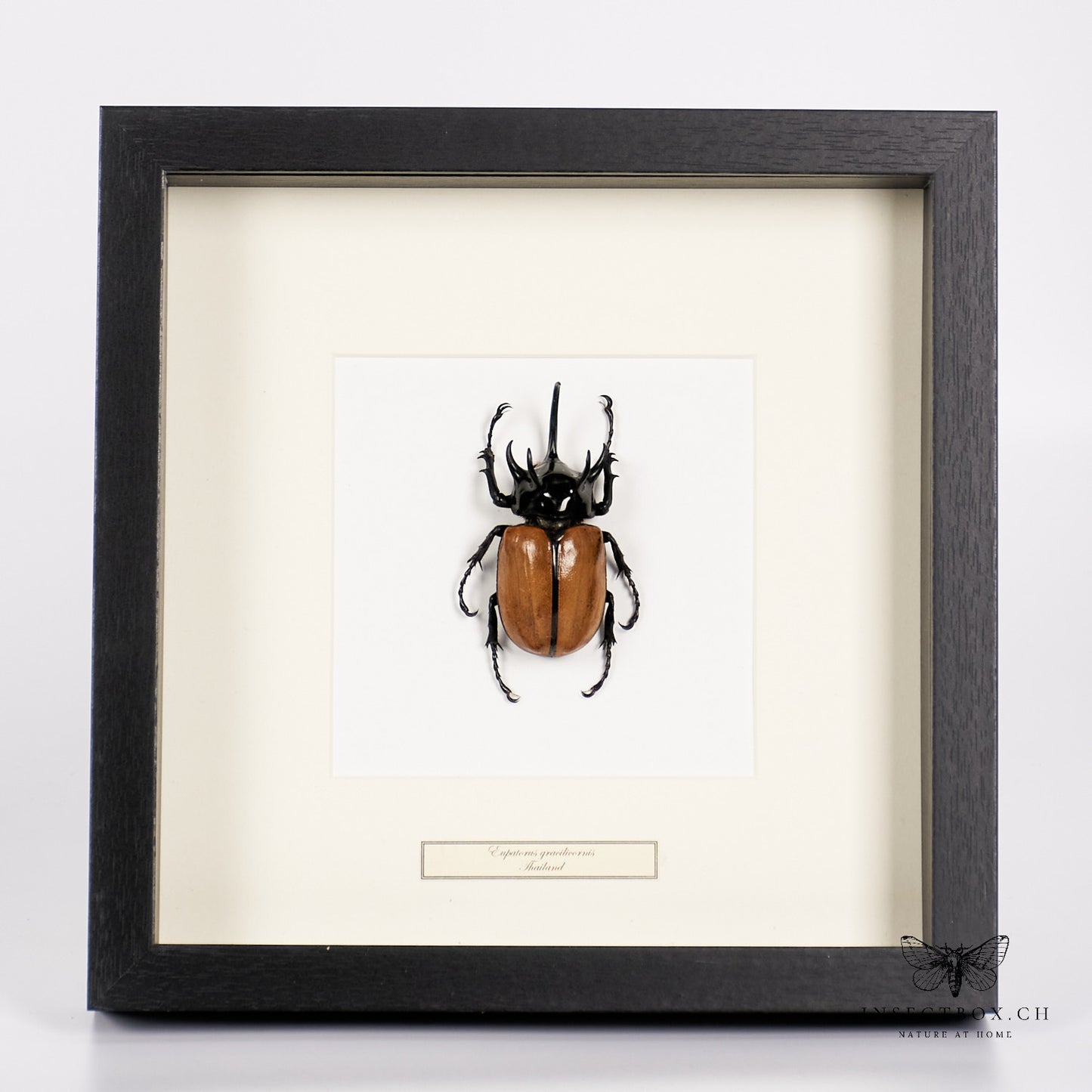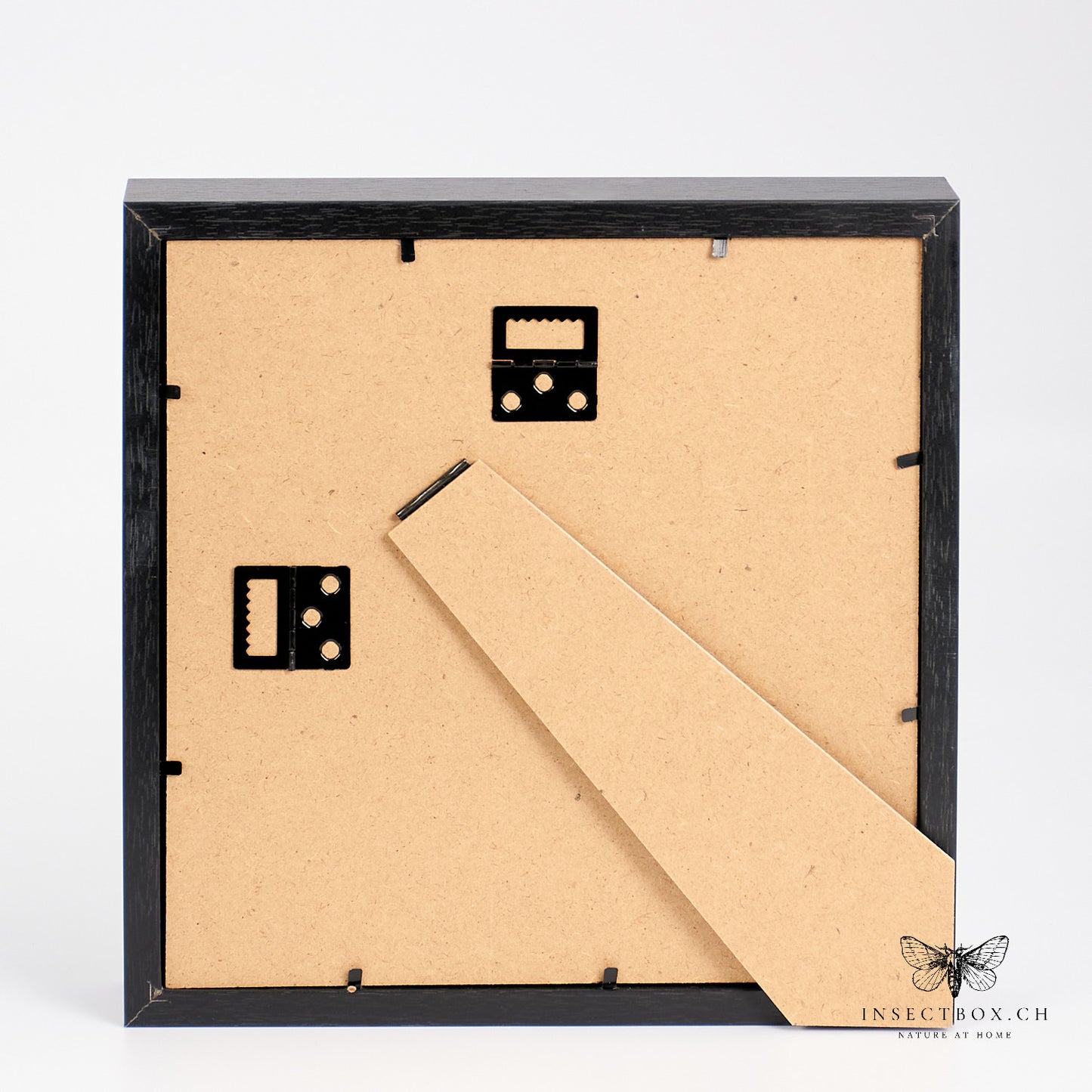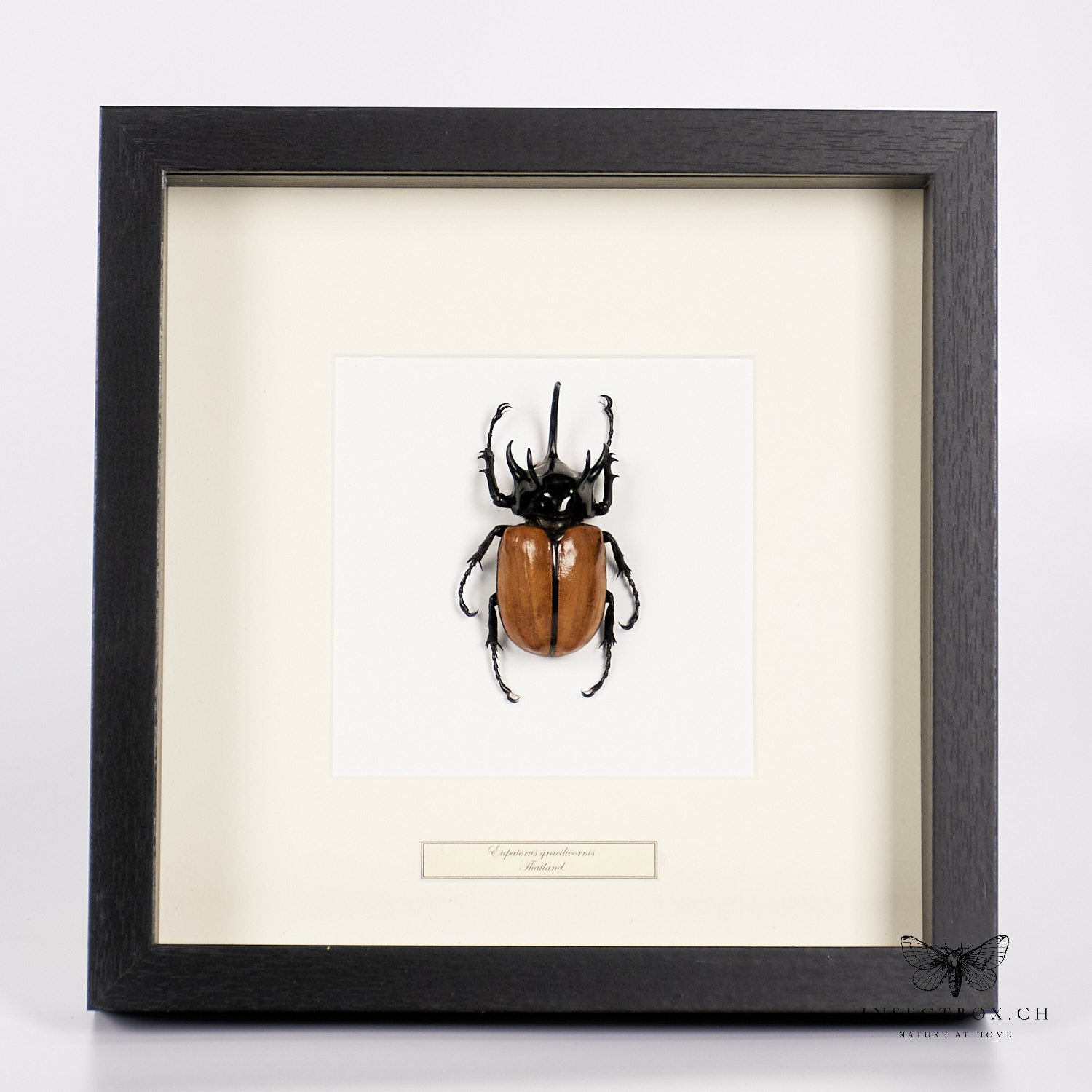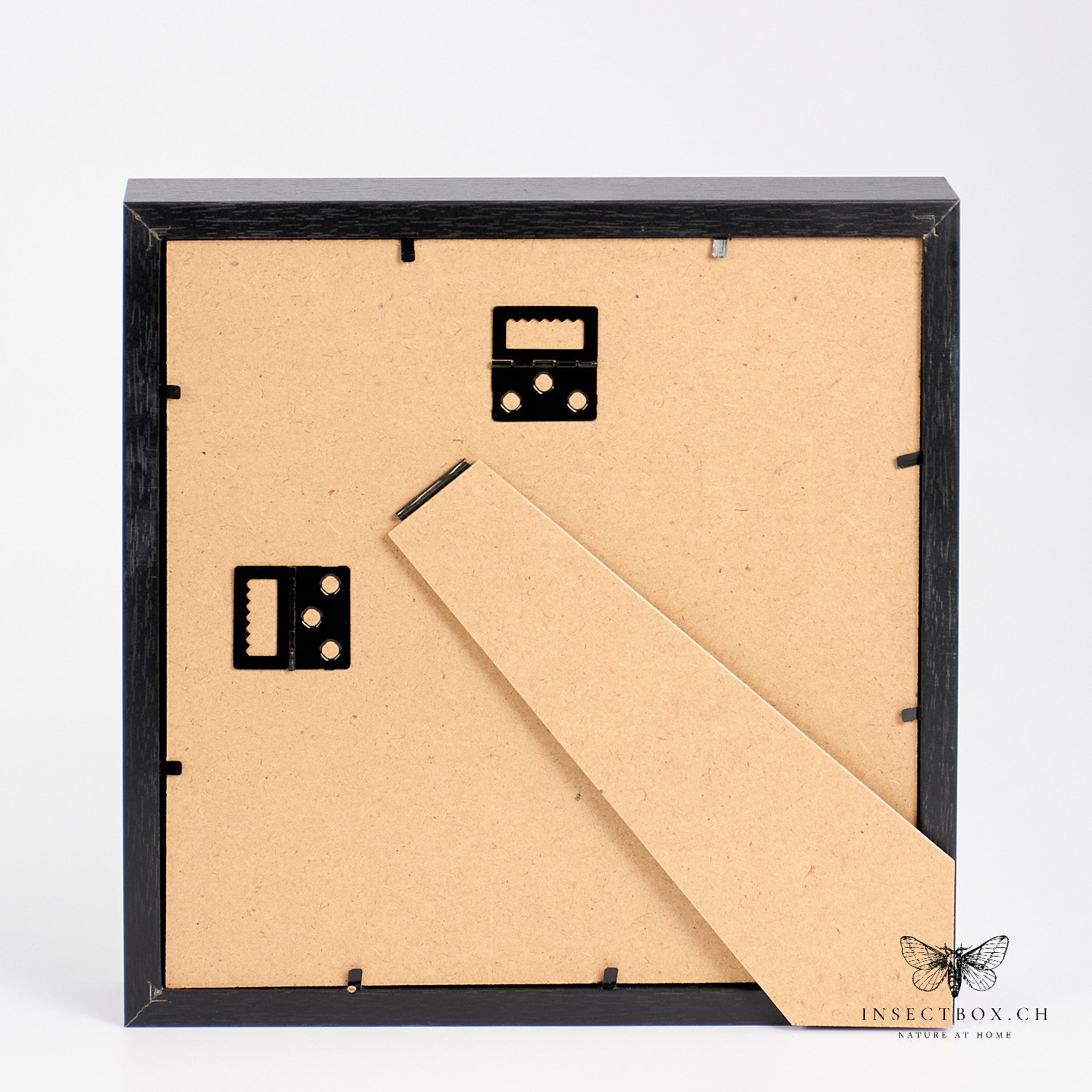carminehome
Rhinoceros beetle - eupatorus gracilicornis
Rhinoceros beetle - eupatorus gracilicornis
Couldn't load pickup availability
Rhinoceros beetle - eupatorus gracilicornis
The genus Eupatorus belongs to the beetles of the family of scarab beetles, which are found in the superfamily Scarabaeoidea.
Look:
The species of the genus Eupatorus are large beetles, ranging in size from 40 to 100 millimetres. They are light and smooth. The pronotum and legs are black, while the elytra are often more or less yellowish brown. As is usual with the horn beetles (Dynastinae), the males are significantly larger than the females and have strong horns on the head and pronotum, which the females lack. In this genus, the males usually have a long horn on the head and two horns on either side of the pronotum. These horns are curved, smooth and tapering. The middle pair of horns on the pronotum can be reduced to pointed nodules. The forelegs have three teeth on the outside of the tip.
Distribution:
The genus Eupatorus is widespread in Southeast Asia and includes the following species
- Eupatorus birmanicus Arrow, 1908 – Myanmar
- Eupatorus endoi Nagai, 1999 – Vietnam
- Eupatorus gracilicornis, also known as the five-horned beetle, Arrow, 1908 – India (Assam), Thailand, Laos, Vietnam (Tonkin)
- Eupatorus hardwickei (Hope, 1831) – Himalaya, India (Sikkim), Bhutan, Nepal, Vietnam (Tonkin)
- Eupatorus siamensis (Laporte de Castelnau, 1867) – Thailand, Vietnam (Annam, Cochinchina)
- Eupatorus sukkiti Miyashita & Arnaud, 1997 – Myanmar, People’s Republic of China (Yunnan)
Life cycle:
The life cycle of the genus Eupatorus, described using the example of Eupatorus gracilicornis: The adult beetles fly, mate and lay eggs in the autumn, after which they die. The eggs are laid in dead wood. The larval stage lasts up to two years.
Share




